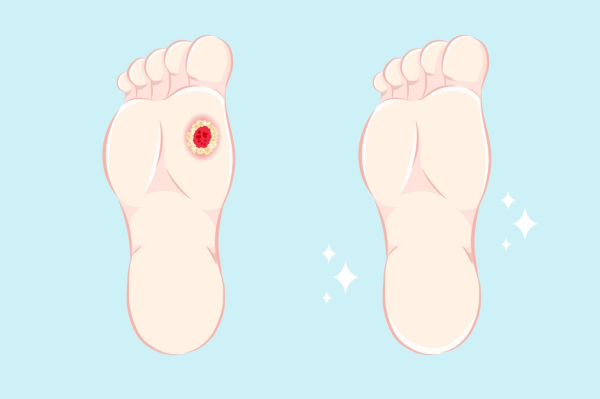Diabetic foot is a complication that is frequently seen in patients with diabetes mellitus, usually developing due to peripheral vascular disease and nerve damage. It can result in serious conditions such as sores on the feet, infections, and sometimes gangrene. Diabetic foot treatment requires a multidisciplinary approach and usually involves the collaboration of specialists in endocrinology, orthopedics and interventional radiology.

Diabetic Foot, Treatment Methods and Multidisciplinary Approach
-
Treatment Stages
The treatment process for diabetic foot requires quick and effective intervention. The treatment stages are as follows:
-
Early Wound Intervention: Immediate evaluation of the wounds and necessary care.
-
Antibiotic Treatment: Use of appropriate antibiotics to reduce the risk of infection.
-
Blood Sugar Regulation: Diabetes control is the cornerstone of the healing process.
-
Initiation of Blood Thinning Medications: Anticoagulant treatment to protect vascular health.
-
Elimination of Arterial Narrowing and Blockages: Opening up arteries to improve blood flow.
-
Long-Term Wound Care: Continuous monitoring and maintenance of the wound.
-
Training in Preventive Measures: Guiding the patient toward lifestyle changes.
-
-
Treatment of Arterial Narrowing and Blockages
The arterial narrowing and blockages that lead to diabetic foot ulcers can be treated using surgical and interventional radiology techniques. In interventional radiology, procedures performed through the vascular route are typically less invasive and offer several advantages:
-
Shorter Hospital Stay: Patients are usually discharged on the same day.
-
No Surgical Scarring: Minimal invasive interventions leave less scarring.
-
No Need for General Anesthesia: Procedures that do not require general anesthesia are less risky for patients.
-
Lower Cost: Interventional methods are generally more economical compared to surgery.
-
Repeatability: The same treatment method can be applied again if necessary.
Methods Used
The following methods are employed in interventional radiology for treatment:
-
Balloon Angioplasty: The use of balloons to open up narrowed arteries.
-
Drug-Eluting Balloon: Balloons with chemotherapy drugs for more effective treatment.
-
Stent Placement: Insertion of metal supports to maintain artery patency.
-
Drug-Eluting Stent: Stents that release drugs to protect the artery wall.
-
Coated Stents: Stents with protective coatings for the inner surface of the artery.
-
Atherectomy: Removal of plaques causing artery blockages.
-
-
Procedure Preparation and Intervention
Diabetic foot treatment is typically performed in an angiography unit and does not require general anesthesia. Prior to the procedure, the patient needs to undergo a fasting period (4-6 hours) and necessary blood tests. The entry site for the procedure is usually in the groin, ankle, or both. During the procedure, a guide wire is used to perform balloon angioplasty and stent placements.
New Technologies
New technology used in diabetic foot treatment includes atherectomy systems, which help clean blockages inside the arteries. Drug-eluting balloons offer better results compared to regular balloons, especially in treating long-term narrowing and blockages.
Long-Term Follow-Up and Lifestyle Changes
After the interventional treatment, it is crucial for patients to make lifestyle changes. These changes include:
-
Regular use of blood-thinning medications
-
Smoking cessation
-
Dietary adjustments
-
Regular exercise
Additionally, proper and hygienic wound care is vital for the healing process.
-
-
Conclusion
If left untreated, diabetic foot can lead to serious complications, including tissue loss. The effectiveness of interventional treatments is closely related to the condition of the vessels before treatment, the methods used, and the patient’s overall health status. With appropriate treatment and follow-up, the quality of life of diabetic foot patients can be significantly improved.
These details are supported by medical information verified by Dr. İbadat Hasanov and aim to educate individuals. In every case, the treatment plan is tailored specifically to you, and this decision is carefully evaluated by your doctors.

































